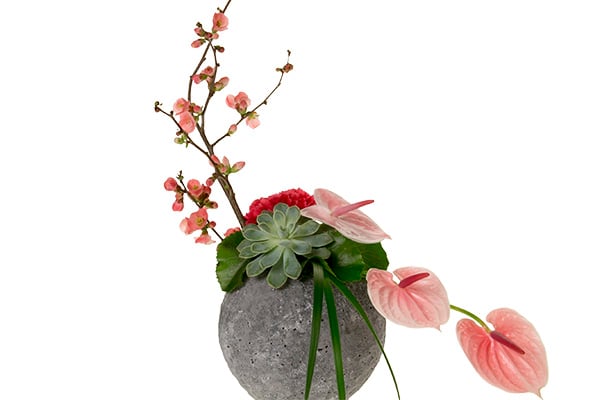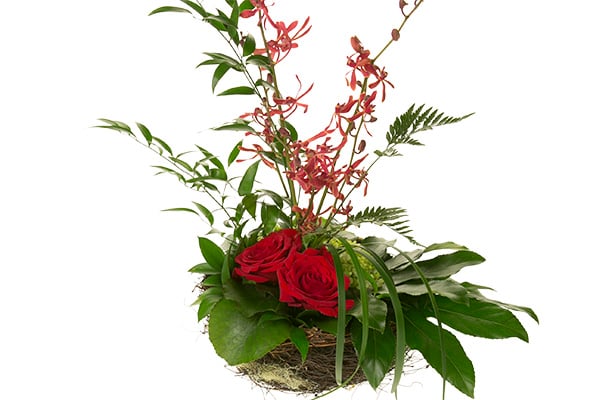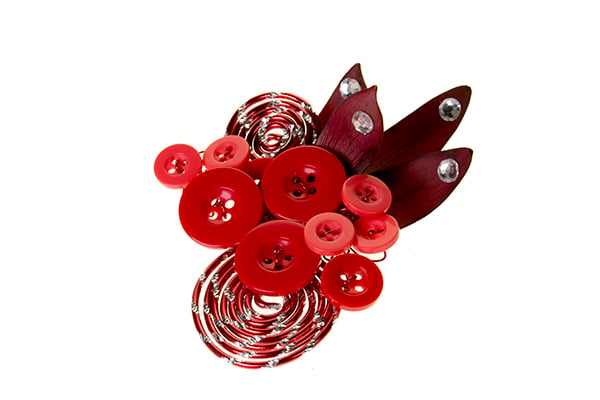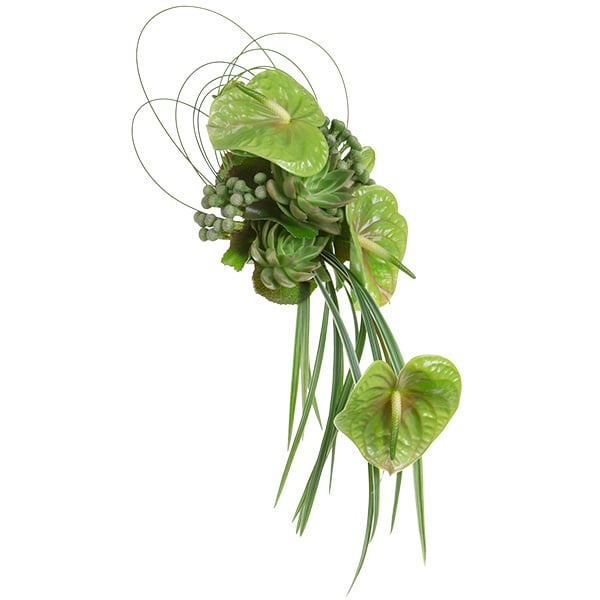Floral Design Certification and Accreditation
Hands-on practice with fresh flowers, lectures on the elements, principles, mechanics and theories of design plus discussions on the various styles of design provides the strong foundation for a floral career. The FDI Certified Floral Designer status is achieved with 160-hours of intensive training paired with independent study and practice. Being an FDI Certified Floral Designer starts you off on the career path well prepared. Read on to find out how to become a certified flower designer.

For accreditation, many FDI graduates turn to the American Institute of Floral Design for testing and evaluation. Offered just once a year, the Professional Floral Design Evaluation (PFDE) is considered to be the most intensive testing and accrediting process in the world. In 2025, the PFDE will be offered during the week of July 12 - 15 in Palm Springs, California at the AIFD Symposium REFLECTION. The 2024 symposium’s testing and evaluation is one more step in the career path for the professional florist.

Successfully completing the test requires additional training and education. It is not enough to be a wonderful designer and creator of beautiful arrangements. To pass at the American Institute of Floral Design (AIFD) accreditation level, you must demonstrate advanced understanding and mastery of the elements and principles of design. You also need to design arrangements that fit the required criteria to make it easy for the evaluator to assess your design skills.

Understanding the criteria and studying the evaluation score sheet is where you want to start. This will guide you in the necessary studies to be fully prepared come testing day. You can find full details on the testing process and what will be expected of you on the AIFD.org website. At Floral Design Institute, we have a class offered once a year dedicated to preparing floral designers for the PFDE. Taught by David Kesler AIFD PFCI, Michelle Headrick AIFD and Leanne Kesler AIFD PFCI, the course Designing for Competition and Evaluation is an intensive three-day session filled with helpful testing tips, design techniques, personal evaluations and a practice PFDE testing session. Once completed, participating students are provided with a training schedule to work independently from home and continue their preparation. The teachers are available by e-mail, telephone and text to evaluate and mentor each student up until the testing day.

Understanding how to design for the PFDE is crucial to success. If you were to create a beautiful bespoke design like the one above, chances are it would not pass. It is a lovely design but difficult to evaluate according to the evaluation sheet. Where is the negative space? How is depth demonstrated? Is the focal emphasis strong enough? Pretty design is not enough to achieve the scoring level required for AIFD accreditation.

Creating an arrangement in the formal linear design style is often the best choice for evaluation. The minimalism and clarity of flower placement shows intentional implementation of each of the required criteria. Look closely at the design above. Notice how few flowers were utilized and yet, the focal emphasis is definite and clear. The lines are simple and pure with no extra materials to interrupt the flow of the eye through the design. Negative space is utilized to highlight each bloom and also to enhance the rhythm of the design.
As you continue your journey in the world of flowers, consider taking the PFDE test for accreditation. Why? That question has as many answers as there are people that ask. For a personal response, contact Leanne Kesler AIFD to discuss your personal floral journey and determine the next best step for your career: 1-503-223-8089.
The Floral Design Institute is YOUR Education Resource.


Comments: (10)
Hello Akramul,
We welcome international students both online and in-person. The online course takes 3-4 months to complete. The in-person basic course is 3 weeks.
During the course, we do discuss employment opportunity. We do not include internships or placement.
Hello! I’m really interested in your floral design training.
I’m from India and already have experience in flower decoration.
I would love to know if your course also helps students find job or internship opportunities after training.
Could you please share the course duration, total cost, and if international students from India can join?
Thank you so much! 🌷
Hello Catherine Flowers,
We have students from all over the world. To join us, you just enroll in the desired session. We do not have student housing but, we do have a list of recommended accommodations on our website – access through the About Us tab.
It is not necessary to have a visa. Most students join us as traveling visitors…just as though you were on vacation.
Hello, I am interested in doing the course.
I am from the Bahamas.
Can you let me know what I would need to do and when to get started.
Do you provide any housing for persons out of country.
And do I need a school Visa.
Hello Libeiri Fuentes,
The next 3 day Designing for Competition and Evaluation Intensive is May 17-19. The fee inclusive of all flowers and supplies is $975. There will be 5 AIFD Certified designers onsite to assist the workshop attendees.